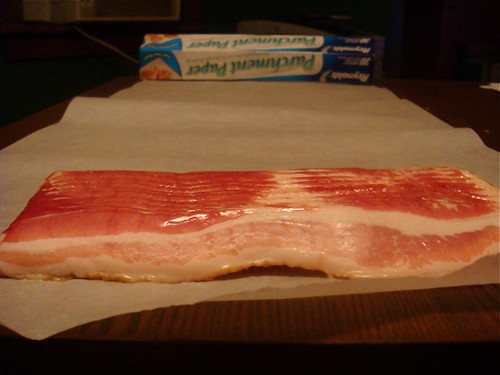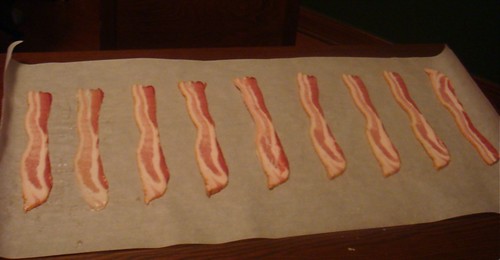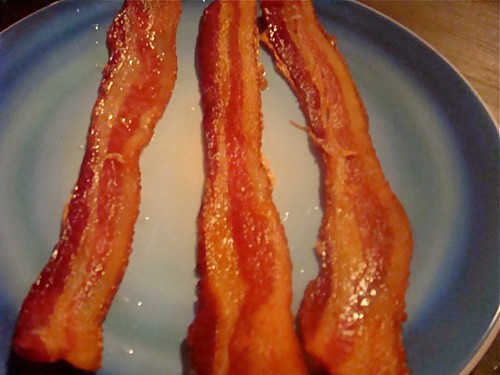
A few days ago Karen updated her facebook status to something like "Thinking about making yogurt from scratch. Wondering if I'm becoming a hippie." Well, I'd argue that anyone that titles their blog "
Off the (Meat) Hook" probably is in no danger of becoming a hippie. I think she's safe. More interestingly, we agreed to both conduct yogurt making experiments.
So I experimented. The result was not a terrible failure, as I had first thought, but, I wouldn't call it a grand success either. What happened was:
I started with whole raw milk. Since the first step was to heat the milk to 180F, I felt it would be an interesting and wholesome choice to go with unpasteurized milk. If you're at all freaked out by this, use the pasteurized stuff, by all means. I've never tried raw milk before, and you can taste the difference. It tastes somewhat fresher and cleaner, if that makes sense.
Why heat the milk to 180? Well, you want to kill off any unwanted bacteria, so you can introduce your own desired bacteria. This is best done over a double boiler, to prevent scorching, but I used a regular pan and that worked just fine. Heat to 180, once it reaches that, remove and cool.
Now comes the tricky part. Really tricky. And, not terribly fun. You need to monitor the milk as it cools. Yeah. Annoying. The goal, a temperature between 108 - 112 degrees. Why? Well, that's the temperature that the good yogurt making bacteria does best.
So, when you get there, which will take tedious time, stir in two tablespoons of organic plain yogurt. I know, why not just eat that yogurt instead?! Well, maybe you should. But for the sake of the experiment, stir it in. This introduces yogurt cultures to the milk, starting the process of fermentation. If you decide you love making yogurt, you can save a small part of each batch to use as a starter for the next one.
Now comes the tricky part. Really tricky. And, not terribly fun. Wait, did I just say that? I did. Like I said, this is a tedious experiment. Now, you have to keep the fermenting pre-yogurt at the same 108 - 112 degrees for 4-6 hours. Fun!!!!!
I took my warm milkgurt and put it in the oven. Luckily, I have an old timey 1950s gas oven. The pilot flame keeps the inside of the oven at about...110 degrees! Lucky me. So, I just left it there, stirring and taking the temp from time to time. After 4 hours, nothing. After 6, it smelt and tasted a little sour (good) but the consistency remained about the same (bad). So, I went out for a beer.
Two hours later, not much had changed. The whatever it was now became a bit thicker, but not very yogurt-like. I figured what would be done was done, so I removed it from the oven and put it in the fridge.
The next day, things looked better. A decent sized pool of watery whey had formed on the top. I poured this off, stirred the mix, and, found I had indeed made something that kind of resembled yogurt. It was a little more sour than the commercial yogurt. I added a fair amount of honey and agave, and it was pretty good. Grainier texture than I would have wanted, but pretty good.
Was this worth it? Probably not. The flavor, once sweetened a bit, was slightly better than commercial yogurt. The texture was not. This was a lot of tedious work. There are very good small batch yogurts for sale just about everywhere. I'm going to continue to buy those.
Maybe Karen will have better luck. She's much more science-minded than I am. (Her dad is some kind of world famous neuroscientist, and that clearly has rubbed off.) Also, she's a dirty hippie.
I should add that whatever it was I made was fine with my belly. So, although I didn't make perfect yogurt, I didn't make myself sick, either!


















































